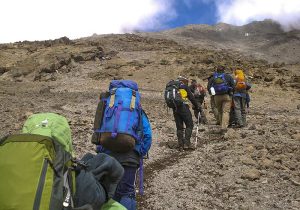Understanding the Glaciers of Mount Kilimanjaro
Mount Kilimanjaro, the highest peak in Africa, is renowned for its iconic snow-capped summit. However, the glaciers that adorn the peak are under threat due to the effects of climate change. Understanding the glaciers of Mount Kilimanjaro is crucial in order to appreciate the beauty of this natural wonder and to raise awareness about the pressing need for environmental conservation.
The glaciers of Mount Kilimanjaro are unique in that they are located near the equator. These glaciers are remnants of the last Ice Age and have been receding at an alarming rate over the past century. The main glaciers on the mountain include the Northern Icefield, the Southern Icefield, and the Furtwängler Glacier. These glaciers have been shrinking rapidly, with some estimates suggesting that they could disappear altogether within the next few decades.
A Comprehensive Overview of Kilimanjaro’s Glacial Features
The glaciers of Mount Kilimanjaro are a key attraction for climbers and tourists who visit the mountain. The Northern Icefield is the largest and most prominent glacier on the mountain, covering an area of approximately 2.2 square kilometers. The Southern Icefield is smaller in size but equally impressive, while the Furtwängler Glacier is located on the southwestern side of the summit.
The glaciers of Mount Kilimanjaro play a crucial role in regulating the local climate and ecosystem. They provide a source of freshwater for the surrounding area, which is essential for the local communities and wildlife. However, the rapid melting of these glaciers is having a negative impact on the region, leading to water shortages and environmental degradation.
Sunset Africa Safari offers guided tours to Mount Kilimanjaro, where visitors can witness the majestic glaciers up close. These tours provide a unique opportunity to learn about the geological history of the mountain and the impact of climate change on its glaciers. For booking inquiries, clients can contact info@sunsetafricasafari.com.
It is vital that we take action to protect the glaciers of Mount Kilimanjaro and preserve this natural wonder for future generations. Sustainable practices, such as reducing carbon emissions and promoting environmental conservation, are essential in mitigating the effects of climate change on the mountain. By raising awareness about the plight of the glaciers of Mount Kilimanjaro, we can work towards ensuring that this iconic landmark remains intact for years to come.
In conclusion, the glaciers of Mount Kilimanjaro are a symbol of the beauty and fragility of our natural world. By understanding and appreciating these glaciers, we can take steps to protect them and preserve the unique ecosystem of this iconic mountain. Sunset Africa Safari offers a once-in-a-lifetime opportunity to experience the glaciers of Mount Kilimanjaro firsthand, providing a valuable insight into the importance of environmental conservation.


